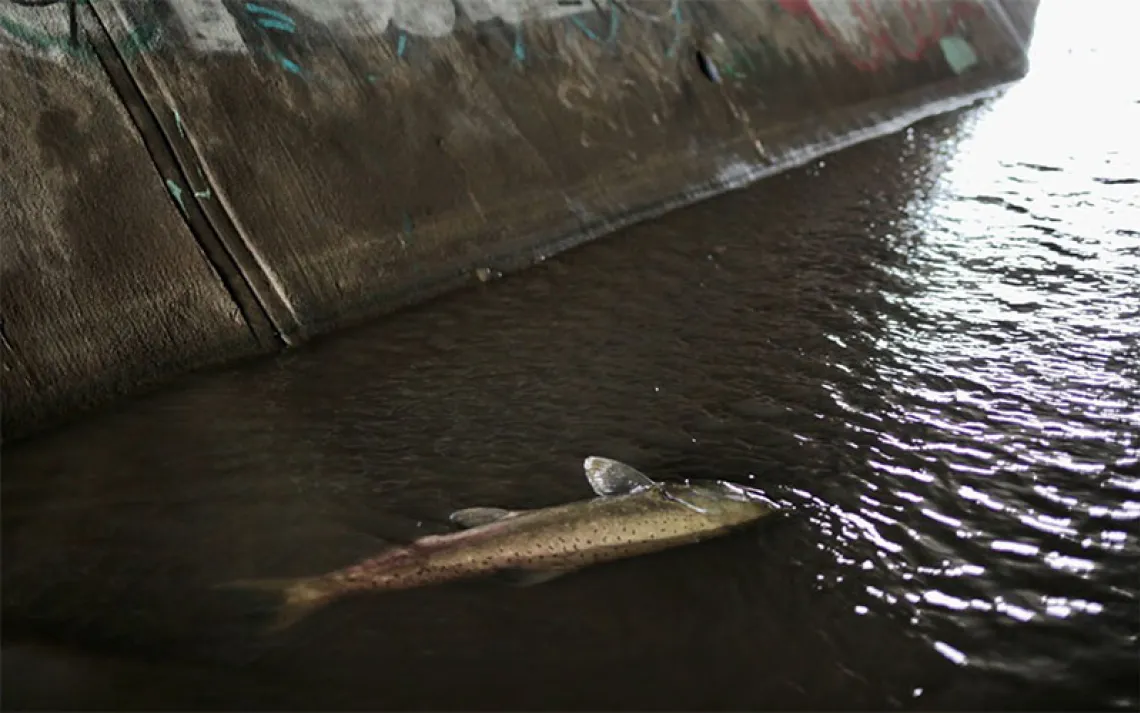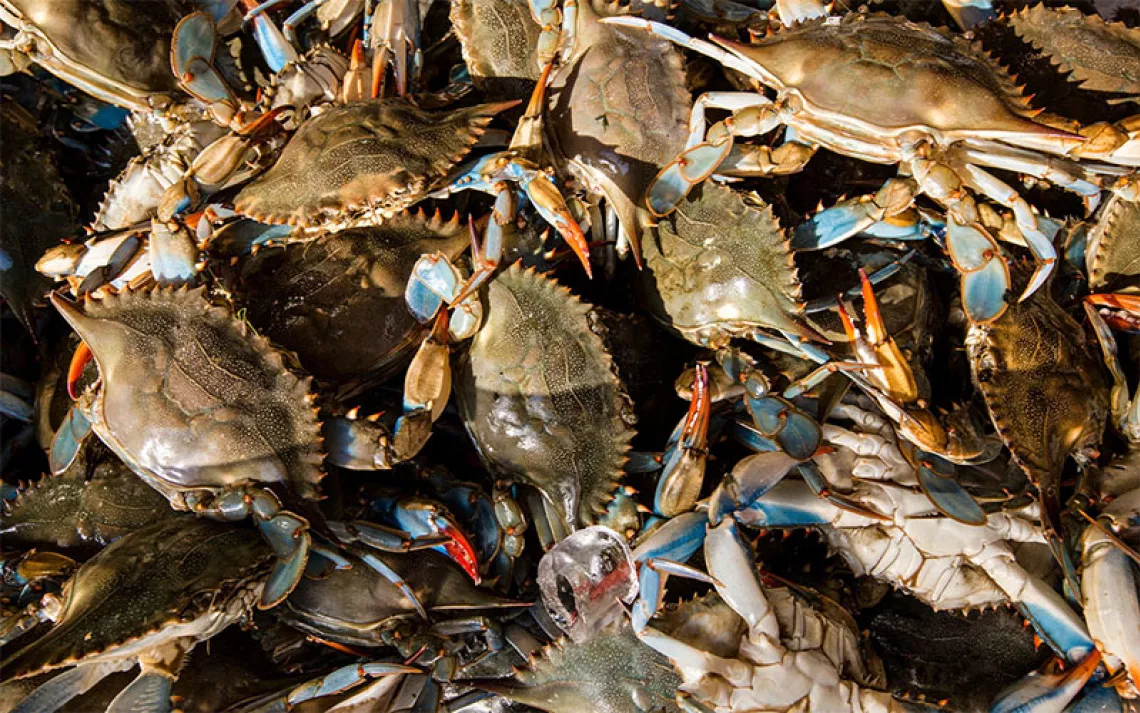Good News for Migrating Herds?
A new mapping tool behooves mule deer, pronghorn, and other ungulates
As winter across the western US gives way to eruptions of wild grasses and forbs, herds of pronghorn, elk, mule deer, moose, and bison will be on the move. These ungulates will leave the sagebrush basins and other shelters that sustained them during the cold months to “surf the green wave” back up high to the mountains. There, they’ll plump up and raise their young throughout the spring and summer before migrating back down, so as to escape the deep snows that obliterate food sources and make movement through alpine landscapes too physically costly to endure.
For decades, state land managers have tracked the migration of large ungulates—at first, simply by observing tracks in sand and snow, until the advent of radio telemetry collars (which relied on helicopter capture of just a few animals). Twenty years ago, the advent of GPS collars allowed land managers to follow many more herd members—improvements today allow for that to happen almost in real time. What’s been missing, though, has been detail. Namely, once movement corridors are identified, it’s been difficult to figure out which are most critical to herd migrations and which are likely to be stymied by the various and ubiquitous forms of development taking place across the West.
The beginnings of a corrective, however, may be underway. In November, the US Geological Survey (USGS) released a report containing detailed migration maps for more than 40 herds of five ungulate species in Arizona, Idaho, Nevada, Utah, and Wyoming. “Migrating animals talk with their legs, but often we only heard a word or two of that sentence,” says Tony Wasley, director of the Nevada Department of Wildlife, one of numerous agencies that collaborated with USGS to create the report. “Now we’re able to see and hear the whole thing across geopolitical boundaries and tell the story as the animals live it.”
What this practically means is that state agencies, tribal bodies, and private landowners have gained a tool that helps them understand where to focus efforts—which can take the form of increasing highway over- and under-passes; introducing wildlife-friendly livestock fences; reconsidering oil and gas (or wind and solar energy) leases; and restoring wildlife habitats—so as to ensure corridors remain open. The objective, of course, is that large, so-called charismatic ungulates can continue to move unfettered through their rangelands.
The story behind the new tool? Several years ago, USGS research wildlife biologist Matthew Kauffman started using Brownian bridge movement analysis—that is, stacking GPS data gleaned from numerous individual animals to estimate a broader view of how a whole herd gets around—to create migration maps for Wyoming’s ungulate populations. This sort of analysis, he says, “lets us pick out the high-use corridors that a lot of animals use” as well as identify medium- and low-use routes and stopover feeding areas that migrators favor as they spend up to two months meandering for as many as 150 miles toward their destinations.
In 2015, Kauffman began to share his work with wildlife agencies in other Intermountain West states that were working to manage their own migrating ungulates. In 2018, an order from the Department of the Interior tasked USGS with leading an expansive mapping effort to improve the conservation of big game corridors and provided funding for the newly released report. (Another 100 or so maps, looping in data from six additional states, are forthcoming in 2021.)
Collaboration between USGS and wildlife agencies has allowed states to learn from one another’s efforts and to “share ideas and technology, brainstorm, and work as a team,” Kauffman says. Working together has been critical, not least because many migrating ungulates—acting on learned knowledge passed down generationally through herd matriarchs of how to get from one range to another, and where good foraging spots are—don’t respect manmade borders. A next step for stakeholders is determining how to mitigate corridors for herds that cross state and tribal lines, where management directives may differ.
The shared input has been important for states like New Mexico (a state whose data, on six herds, wasn’t ready in time for the current report, but some of it may appear in the next one). Says Department of Game and Fish big game program manager Nicole Tatman, partnering with USGS gave her small department access to valuable data analysis. This will help them amplify the impact of their usual habitat restoration work—prescribed burns for forested areas and encouraging landowners to replace old net wire fencing, under which pronghorn cannot shimmy—by showing them which corridors are most important to focus on.
Although none of the species featured in the report are threatened or endangered, Jill Randall, big game migration coordinator for the Wyoming Game and Fish Department, points out that some mule deer herds in her state have been “flatlining or tipping down,” adding, “Many are below the population objective.” Moose are also of concern, with significantly decreased populations in some instances. Research into why is ongoing. But the vagaries of climate change—invasive cheatgrass outcompeting native forages in Wyoming, for example, and New Mexico’s mounting drought concerns—are possibly impacting herd health already and will create new, unforeseen challenges for ungulates in coming years.
In addition, USGS’s Kauffman explains, “The West is growing, and almost everything we do on the landscape makes migrations more difficult.” Highways, with their multitudes of vehicles that present constant danger to animals, are an obvious threat. But even oil and gas development, which might crop up in seemingly desolate spots and create no obvious impediment to movement, is a concern because, as Kauffman says, “Ungulates avoid areas of human activity.” They might not forgo a route altogether, but “when they hit an oil and gas field they speed up, zipping through without feeding as much, which makes migration less profitable.” And when these ungulates suffer, so too do top predators like the grizzly bears and wolves that hunt them, as well as the scavengers, like golden eagles and coyotes, that feed on their carrion. A depleted ungulate community is a threat, more generally, to biodiversity.
Luckily, says Kauffman, manmade threats are things that can be controlled. “If we can look at where the impediments are, we have all the scientific tools to modify them.”
 The Magazine of The Sierra Club
The Magazine of The Sierra Club




